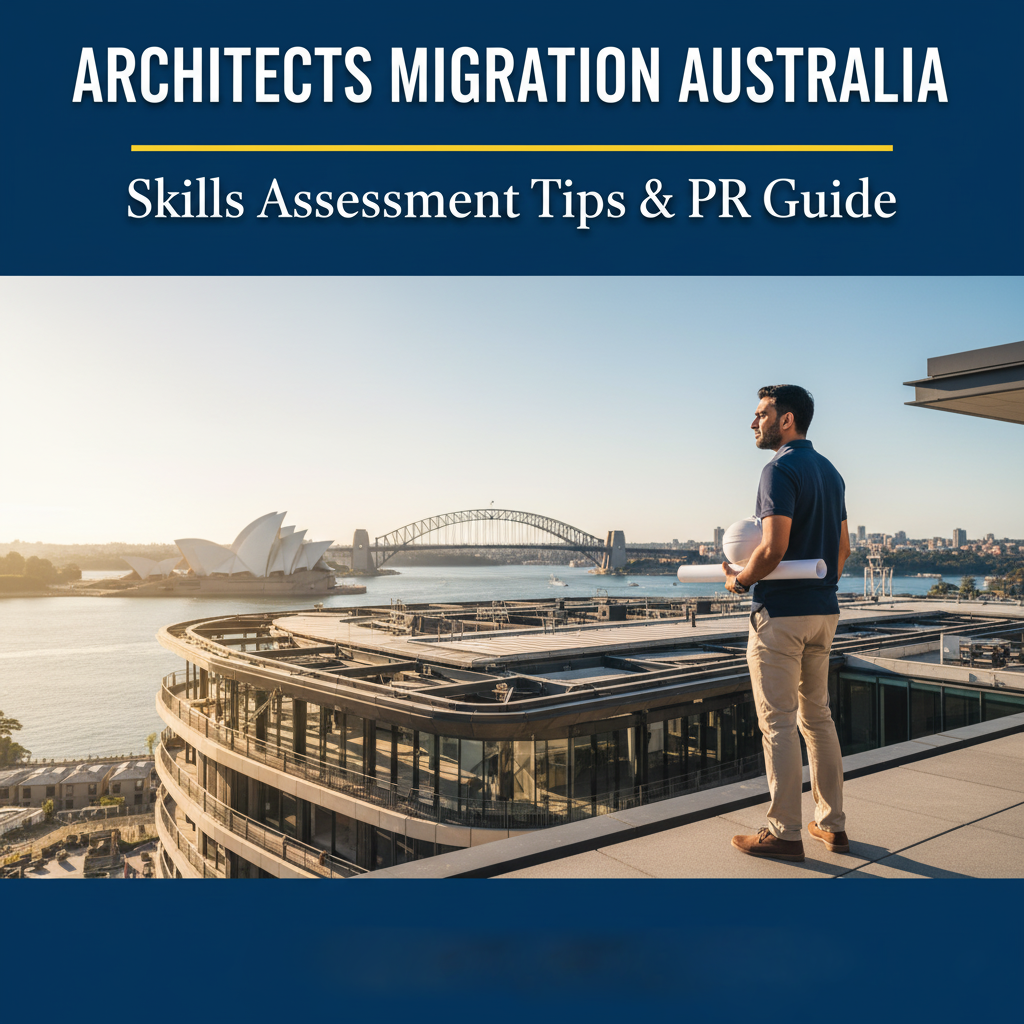Master architect migration to Australia with expert skills assessment tips, ANZSCO codes, and PR pathways. Learn how to secure your future as an architect.
Architects Migration: Skills Assessment Tips
Migrating to Australia as an architect offers a world of opportunity—but it’s also a rigorous process with strict skills assessment requirements. Many talented professionals face delays or rejection due to incomplete documentation or misunderstanding the assessment process. This guide delivers actionable tips for a successful architect migration to Australia, including how to ace your skills assessment and secure permanent residency.
The Problem: Navigating Complex Skills Assessment for Architects
Australia’s architecture sector is highly regulated. For overseas architects, the first major hurdle is obtaining a positive skills assessment—a mandatory step for all skilled migration and permanent residency applications. The process is detailed and can be confusing, especially for those unfamiliar with Australian standards and the Architects Accreditation Council of Australia (AACA).
Common challenges include:
- Understanding which qualifications are recognized and which assessment pathway to choose.
- Compiling the right evidence and documentation for the AACA.
- Meeting strict deadlines and responding to requests for additional information.
- Navigating the differences between migration skills assessment and professional registration.
Why is this so important?
A failed or incomplete skills assessment can halt your migration journey. Without a positive outcome, you cannot proceed with key visas such as the Skilled Independent (subclass 189), Skilled Nominated (190), or Employer Nomination Scheme (186).
The Solution: Architect Skills Assessment & Migration Pathways
- Understanding the Architect Skills Assessment Process
The AACA is the designated authority for architect skills assessment in Australia. The process is designed to verify that your qualifications and skills meet local standards and align with the architecture ANZSCO code 232111.
Assessment Pathways:
- Pathway A: For those with an accredited architecture qualification from Australia, New Zealand, Hong Kong, or Singapore. If your degree is on the AACA’s accredited list, you can use a simple verification process.
- Pathway B: For overseas qualifications not on the accredited list. You must complete the AACA’s Overseas Qualifications Assessment or Experienced Practitioner Assessment.
- Pathway C: For applicants with both Australian and overseas qualifications. Only one qualification needs to be accredited for the simple process.
Key Steps in the Assessment:
| Step | What’s Required | Tips |
|---|---|---|
| 1. Submit Application | Complete the AACA form and pay the fee. | Double-check that your qualification matches the correct pathway. |
| 2. Documentation | Certified copies of qualifications, transcripts, ID, and (if required) portfolio of work. | All documents must be high-quality scans; translations must be certified. |
| 3. Paper-Based Assessment | AACA reviews your academic credentials and portfolio. | Respond promptly to requests for clarification—delays can lead to termination. |
| 4. Interview (if required) | Some applicants may be asked to attend an interview or submit further evidence. | Prepare to discuss your experience, design principles, and technical knowledge. |
| 5. Outcome Letter | If successful, you receive a skills assessment letter for migration. | This is valid for skilled visa applications. |
Important:
Professional experience is not always assessed for the migration skills assessment, but it is required for full registration as an architect in Australia. For migration, the focus is on academic comparability and architectural competencies.
- Architect Migration Pathways to Australia
Once you have a positive skills assessment, you can apply for several skilled migration visas:
- Skilled Independent Visa (subclass 189): Points-tested, no sponsorship required, grants permanent residency for architects.
- Skilled Nominated Visa (subclass 190): State or territory nomination, also grants PR.
- Skilled Work Regional (subclass 491): Provisional visa for regional work, leads to PR after three years.
- Employer Nomination Scheme (subclass 186): Employer-sponsored PR pathway.
- Temporary Skill Shortage (TSS) Visa (subclass 482): Temporary work visa, can lead to PR via the 186.
Eligibility Essentials:
- ANZSCO Code: Architect is classified under 232111 on the Medium and Long-Term Strategic Skills List (MLTSSL), making it eligible for most skilled visas126.
- Points Test: You must score at least 65 points, with higher scores improving your chances. Points are awarded for age, English proficiency, qualifications, and work experience18.
- English Language: You must meet minimum English requirements (IELTS, PTE, etc.).
- Skills Assessment: A positive AACA assessment is mandatory for all skilled migration visas.
- Tips for a Successful Skills Assessment
- Choose the Right Pathway
Check if your qualification is on the AACA’s accredited list. If not, be prepared for a more detailed assessment and portfolio review125. - Prepare Your Documents Carefully
- Submit certified copies of your degree, transcripts, and ID.
- For overseas qualifications, include a detailed portfolio showing your design, technical, and project experience.
- Ensure all non-English documents are accompanied by certified translations.
- Address AACA Feedback Promptly
If the AACA requests additional information or revisions, respond within the specified timeframe (usually two weeks). Delays can result in your application being closed and fees forfeited2. - Highlight Relevant Skills
Demonstrate your knowledge of spatial awareness, architectural design principles, and materials. Be ready to discuss how your experience aligns with Australian standards9. - Understand the Difference Between Migration Assessment and Registration
The migration skills assessment is for visa purposes only. Full registration as an architect in Australia requires additional steps, such as the Architectural Practice Examination (APE) and evidence of local experience1210.
Action Steps to Get Started
- Research Your Pathway:
Visit the AACA website and review the pathways for skills assessment. Identify whether your qualification is accredited or requires an overseas assessment124. - Gather Documentation:
Prepare certified copies of your academic qualifications, transcripts, ID, and (if needed) a portfolio of work. - Check English Requirements:
Book an approved English test if you haven’t already. - Submit Your Application:
Complete the AACA application form, pay the fee, and upload all required documents. - Respond to Feedback:
Monitor your email for any requests from the AACA and reply promptly. - Plan for Next Steps:
Once you receive a positive outcome, research which skilled migration visa best fits your goals and begin your Expression of Interest (EOI) in SkillSelect.
Conclusion
Migrating as an architect to Australia is a rewarding but demanding process. By understanding the skills assessment requirements, preparing your documents thoroughly, and following the right migration pathway, you can maximize your chances of success. Stay organized, respond quickly to feedback, and seek professional advice if needed. With careful planning, permanent residency for architects in Australia is within reach.


